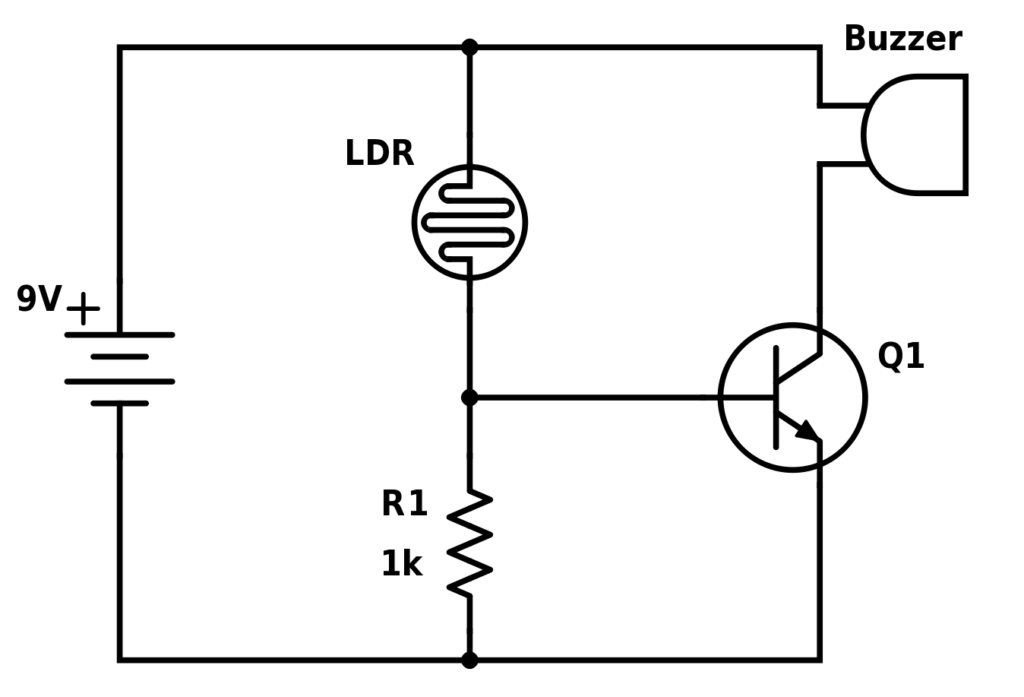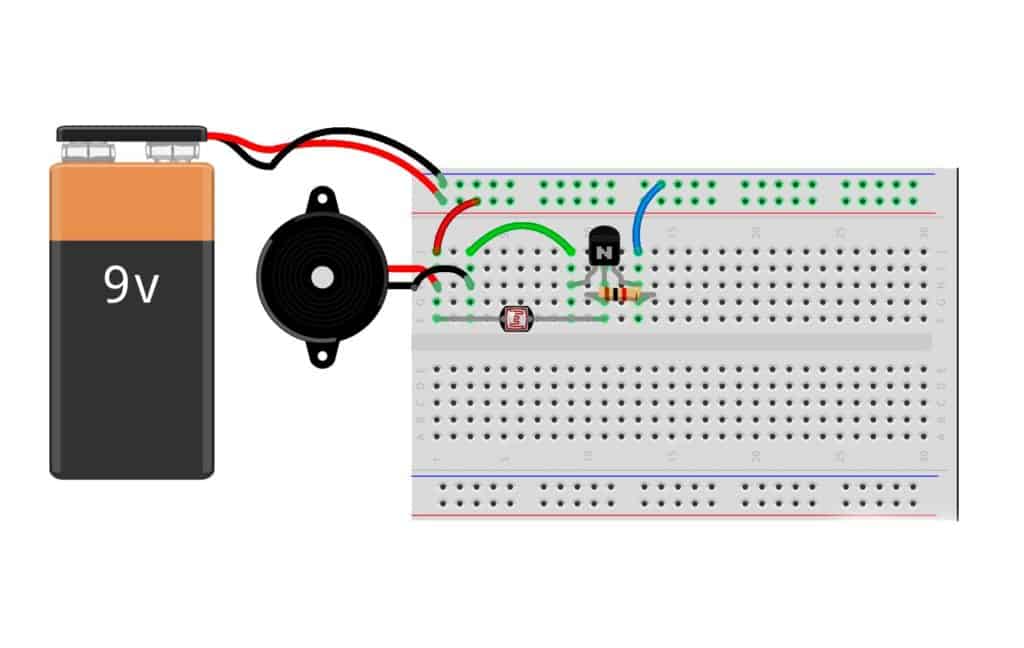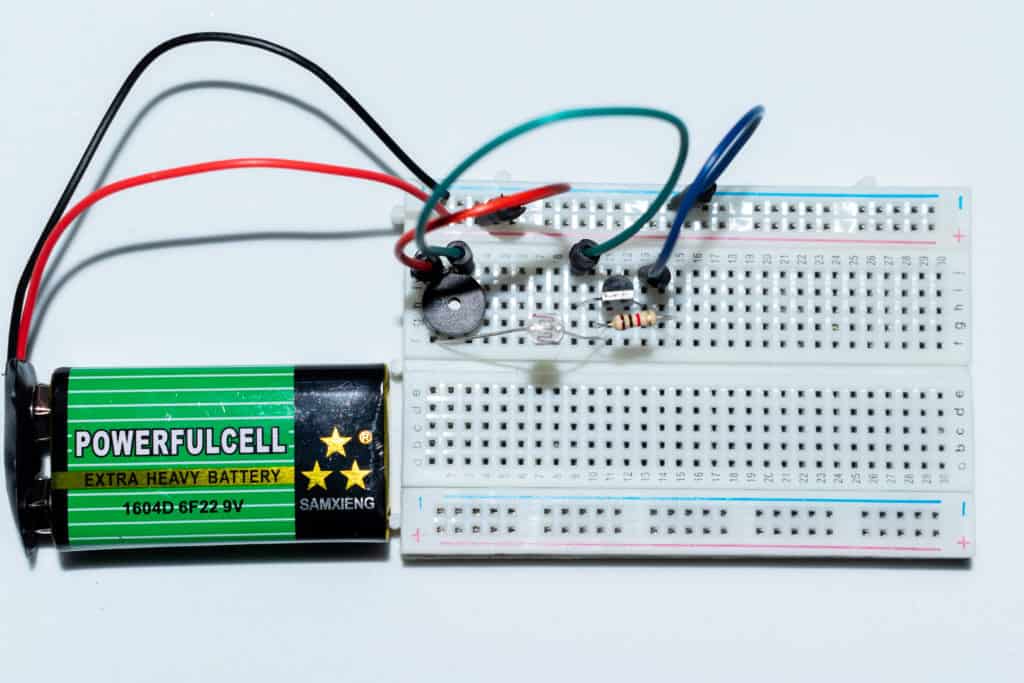In this tutorial, you’ll learn how to build a sunrise wake-up alarm. It’s a light-sensitive circuit that will activate a buzzer when you have light shining directly on it. Place it in your window at night and the alarm will activate in the morning when the sun rises.
This circuit uses an active buzzer that works with 9V. Find the breadboard diagram and full parts list below the video.
The Components You’ll Need

- 9V Battery
- Breadboard
- Wires (For example Dupont male-to-male)
- LDR: Photoresistor
- Q1: Transistor BC547
- R1: Resistor 1 kΩ (replace with a potentiometer to adjust sensitivity)
- Buzzer: Active (9V)
To test this circuit, I recommend you connect it on a breadboard since it’s quick and you can easily try different resistor values. If you decide that you want this more permanent, you can solder it onto a stripboard or even make your own PCB design out of it.
Below you can see how I connected this circuit on a breadboard:

How The Circuit Works
This circuit is very similar to the Automatic Night-Light Circuit. But while the night-light turns on the transistor when it gets dark, this circuit turns on the transistor when it gets light.
The photoresistor and the resistor make up a voltage divider. And to understand it, you should also know how the transistor works.
When it’s dark, the photoresistor will have high resistance – much higher than R1. That means the voltage divider gives a low voltage out to the base of the transistor and it stays off. When the transistor is off, the buzzer is deactivated.
When there is a lot of light shining directly on the photoresistor it will have low resistance. This will give a higher voltage out to the base of the transistor so that it turns on. This means the buzzer gets activated and starts making sound.

Questions?
Did you build this circuit? Do you have any questions about how it works or how to build it? Let me know in the comment section below.
Copyright Build Electronic Circuits
No comments:
Post a Comment